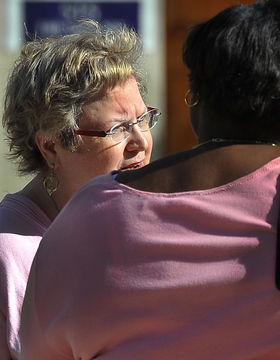WASHINGTON — Martha Rigsby collapsed for the first time in 1977. The spells continued, and she began calling 911 for help.
She hasn’t stopped.
In the past year alone, she’s accounted for 226 calls to 911 and been whisked by an ambulance to a hospital 117 times.
Among firefighters in the District of Columbia, she’s a dreaded legend. They can recite her date of birth and Social Security number from memory.
Over 30 years, Rigsby has become the most frequent 911 user in Washington history, totaling thousands of emergency calls and trips to the hospital after falling down, court papers say.
Dubbed “super users” or “frequent fliers,” repeat 911 callers have long been identified as burdens on the health system and a drain on public-safety resources.
“There will come a time when one of these âfrequent 911 callers’ will call and they will cost someone else their life,” said Jim Dunford, the emergency medical director for San Diego and a known expert on frequent 911 callers.
Some cities, including San Diego, track mileage and ambulance hour time for each frequent caller to calculate the long-term costs and effects of serial 911 callers, Dunford said.
“All cities are going through a similar experience of how do we deal with this small subset of people,” he said.
For years, there has been concern that if crews are tending to Rigsby, the next 911 caller with an emergency might get a paramedic from a farther distance, said David Miramontes, medical director of the D.C. Fire and Emergency Medical Services Department.
A group of D.C. officials met earlier this year to figure out how to solve their problem with Rigsby. Her situation has led to the first known attempt in the city to seek guardianship for a serial 911 caller.
The Department of Behavioral Health filed a court petition in April, alleging that Rigsby, 58, has bipolar and borderline personality disorders and does not have the mental capacity to handle her medical affairs.
These are “uncharted waters,” Miramontes said.
It might be a unique attempt in the District of Columbia, but other cities have reported success with similar proceedings.
Niels Tangherlini, a paramedic captain for the San Francisco Fire Department, led a successful pilot program from 2004 through 2009 to stop 911 serial callers.
During the height of the program, Tangherlini said, officials successfully filed conservator petitions, which are legally similar to guardianships, for about 12 serial 911 users a year.
Public documents and legal proceedings detail Rigsby’s 911 habits and assessments of her mental state and medical problems.
According to testimony during court hearings, Rigsby’s calls follow the same general pattern.
She feels faint and collapses. About 40 percent of the time, she dials 911 on her own. Other times, she’s out in the District of Columbia when passersby see her fall and call for help, the testimony indicated.
About 55 percent of the time, she refuses to be transported in an ambulance and signs a waiver allowing emergency responders to leave. Over the past five years, each ambulance trip has averaged $478.
Send questions/comments to the editors.


